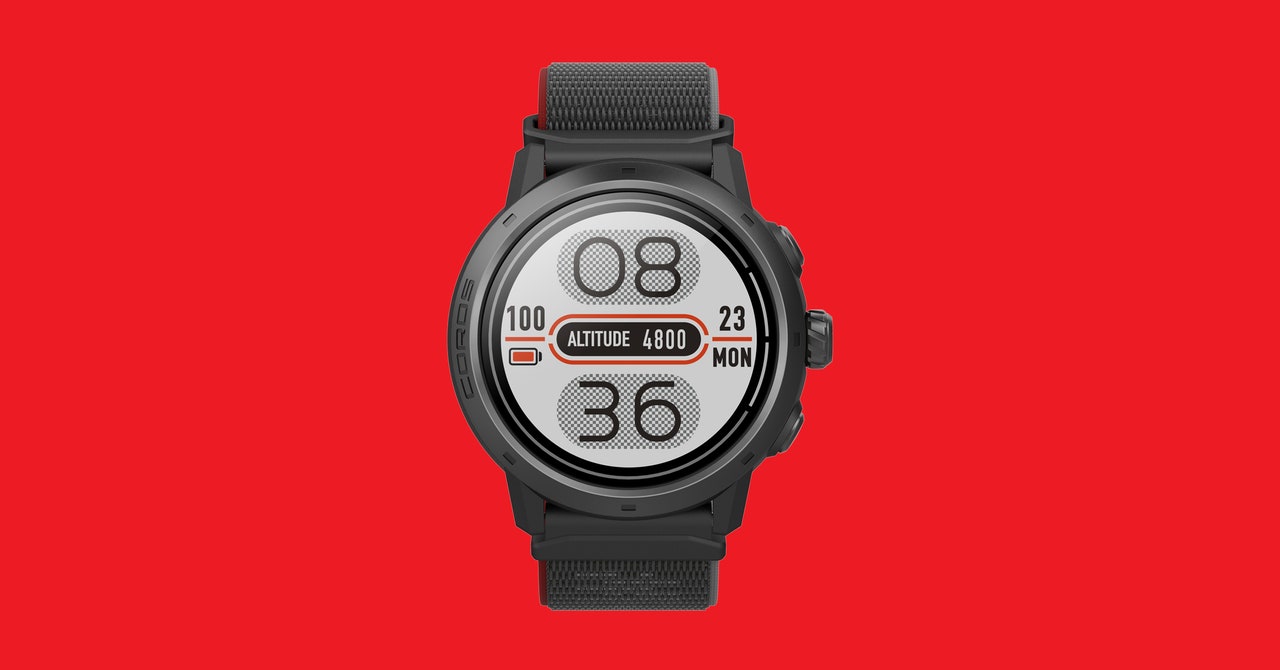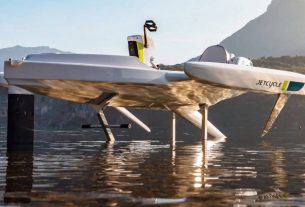I can’t be the only person who has this problem. When I’m snowboarding, I’m moving. I sit down to clip in, and flip myself over to stand up. I fall off kickers, unclip to hike back up and shoot the chute, and drop into the half-pipe while scream-singing to Jon Secada. When I test enormous, expensive Garmin watches, I often unintentionally hit the side buttons or touchscreen with my shenanigans, stopping or starting recordings accidentally.
Coros watches lock. You hold down the middle button to start recording your activity, then hold it down again for three seconds to stop the recording. Smart! This is one of a number of small but much appreciated features that make Coros watches some of my favorites right now, even compared to more expensive sports watches from other brands.
The company has hit on something that most manufacturers haven’t: People who like sports (me in particular) don’t always care about looks. A big, bright, crisp screen doesn’t mean as much to me as not having to charge my watch every night. I would happily pay a lower price for a watch that is more comfortable, convenient, and easier to wear.
Lab Rat
The Apex 2 debuted late last year and comes in a basic or Pro version. I tested the Pro, which is $100 more, slightly bigger, and has dual-frequency GPS for more precise position tracking. And it has my preferred nylon strap, which doesn’t trap sweat like silicone straps do. Measuring 46.5 millimeters across, the Pro is bigger than the base model, but not as big or heavy as Coros’ Vertix 2 (50.3 mm).
Dual-frequency GPS positioning is important because Coros now employs EvoLab, a personalized sports science platform and a direct competitor to Garmin Connect. (It’s free to use with all Coros watches, unlike Fitbit Premium.) The company has savvily targeted serious runners with celebrity ambassadors like Des Linden, Kilian Jornet, and Eliud Kipchoge. Moreover, you can only unlock EvoLab by tracking road running sessions. If you’re interested in progressing as a runner, programs like EvoLab are better than what you’d get with the Apple Watch. Sure, Apple now measures a bunch of useful running metrics, but it still doesn’t give you an actionable big-picture overview.
Photograph: Coros
It took me about two weeks of running three to four times a week (and sleeping regular hours, which I’m not great at) to unlock EvoLab. Once I did, I scrolled through its proposed training plans, which are, in a word, nice. (You can look at examples of training plans online.) I’m currently working on my speed development, which helps you run faster, and more easily, by rotating longer aerobic runs at an easy pace with short, hard anaerobic intervals.
One of my workouts has me running fast 0.1-mile repeats with 0.4-mile recoveries. That means I run at my threshold pace for 0.1 mile and then jog for 0.4 mile. The Apex 2 Pro pings me when it’s time to start my fast segment, pings me when I’m not within my targeted speed range, and then pings me to stop and go back to recovery pace. To put this technological feat into perspective, I can run 0.1 mile in about the time it takes you to read this paragraph. In that time, the Apex 2 Pro sends dozens of signals up to space and back, fast enough to direct me in real time.
It’s not nearly as accurate as a coach standing at a track with a stopwatch, but it is a lot more convenient and cheaper. For more running metrics, you can also add the Coros Pod 2 ($99), which is slightly more expensive than the comparable Garmin running pod. When it came to tracking my speed and heart rate on my routine runs, I didn’t notice any discrepancies between the Apex 2 Pro and the Apple Watch Ultra, which also has dual-frequency GPS positioning. Maybe the Apex 2 Pro was slightly slower to lock on to GPS when I started a run.
Wrist Navigate
Probably one of the biggest reasons to own a Garmin is its navigational capabilities. If you’re at all like me, an impulsive and scatterbrained outdoors person with no sense of direction, it’s invaluable to have easy-to-use maps even when your phone has no signal. Here, there’s simply no comparison. Garmin started out as a navigational company, and even now, its maps and software are just so much easier to use.
The Apex 2 Pro is much harder to use for navigation. There are preloaded landscape maps that are relatively easy to see and scroll through on the LCD screen, but you have to download topographic maps. I especially noticed this while snowboarding. I may have turned the activity recording on and off accidentally on the Garmin Epix, but Garmin has ski resort maps preloaded on all its watches for all the resorts near me—I never had to do anything! You’ll have to manually download topographic maps on the Apex 2 Pro, which comes with 32 GB of storage. That’s about enough for 10 or so routes stored as GPX files. Since there’s no integration with music services, you will have to share that space with MP3 files, if you still do that sort of thing.



